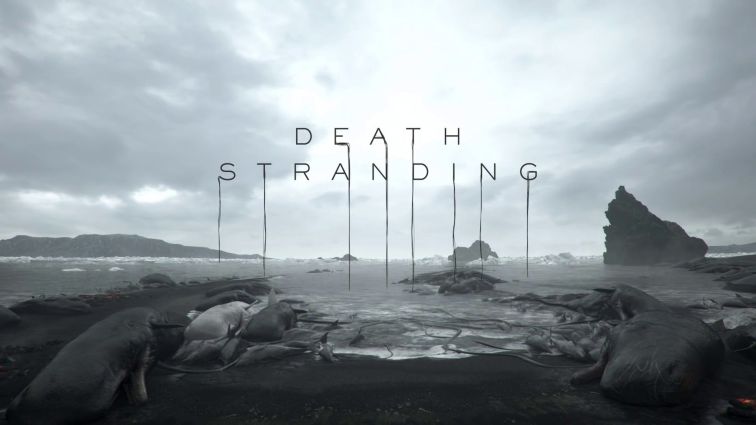
“I’ll be waiting for you on the beach.”
Death Stranding begins as a tedious slog that evolves into Kojima’s magnum opus. No longer reigned in by Konami, Kojima was left to allow his mind to go wild. Slow pacing is likely to turn many off, but if you fall into the game’s early loop of deliveries, you’ll find some of the best stuff in gaming on the other side. Death Stranding is the definitive game of the year for me, one that takes immense risks that set it apart from anything else. But at the core of it all is a simple idea: making connections.
Throughout the promotion process prior to launch, Kojima constantly spoke about how his newest game was about forming connections. The new ‘stand’ genre of game was something he insisted would change gaming. While the game isn’t really a new whole genre, the game certainly finds connections at the center of everything Kojima presents the player.
Focused on keeping hold of what makes us human, Death Stranding explores an America after a post-apocalyptic event named after its title. Left behind are BT’s, those that have died but remained tethered to the land of the living, and humans that are spread across America in pockets. Sam is given the job of making deliveries to reconnect fractured America. A simple idea of making connections, right?
At the mechanical core of Death Stranding is a gameplay loop that may seem boring. Simply delivering packages from point A to point B doesn’t sound glorious or captivating. It’s laborious, time-consuming, and sometimes even frustrating. Combat takes a back seat to simply exploring and traversing. Even going as far as scolding you for killing people, Death Stranding feels very different; In a good way, when put up against the rest of gaming. Kojima wants players to connect with the rest of the NPC’s within the universe rather than have you kill them. Are you still with me on the connections stuff?
The beauty of Death Stranding lies in the journey and the weight of all the player’s actions and the way they connect with others.
Each delivery pushes you across stretches of beautifully realized, dynamic landscapes. Every step is calculated and the player is forced to evaluate the details. Do I need ladders to get up a mountain or should I take a different route to avoid the Timefall and BT’s?
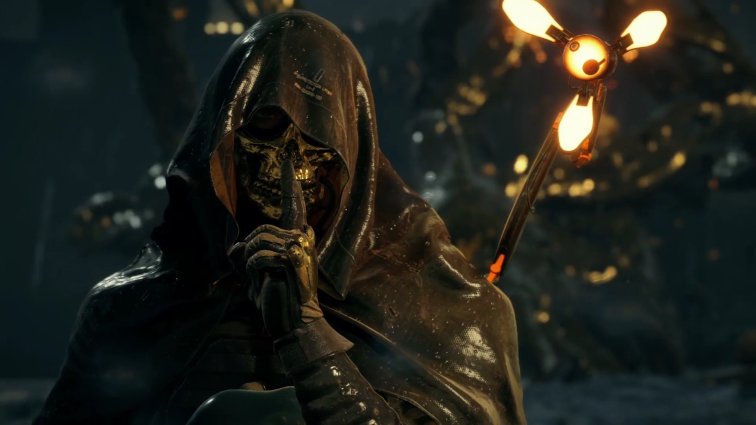
Higgs, whose boss fight is one of the best moments in gaming for 2019.
With an open-world akin to Breath of the Wild, you often find yourself alone on the journey. That is, physically alone.
Death Stranding’s multiplayer component, which allows players to build structures that will appear in other game worlds, adds a new sense of purpose to your journey. The weight of not only the NPC’s but also other players’ journeys are felt, as you drop a ladder down the side of a mountain or build a safe house to rest in. This is all quantified for the player to see via the social media style ‘Likes’ system. Kojima purposely left out the ability to leave negative feedback on items, meaning every time another player uses your structure, the game lets you know you helped another porter on their journey.
I found myself caught in the loop of helping build roads, planting zip lines and leaving my access cargo in shared lockers for others to access. I wasn’t playing the game for myself. I was playing it for others. In the ‘empty’ world, I wasn’t alone. This feeling of purpose is rare in games of this scale, one that Kojima mastered both with the game’s systems and its narrative.
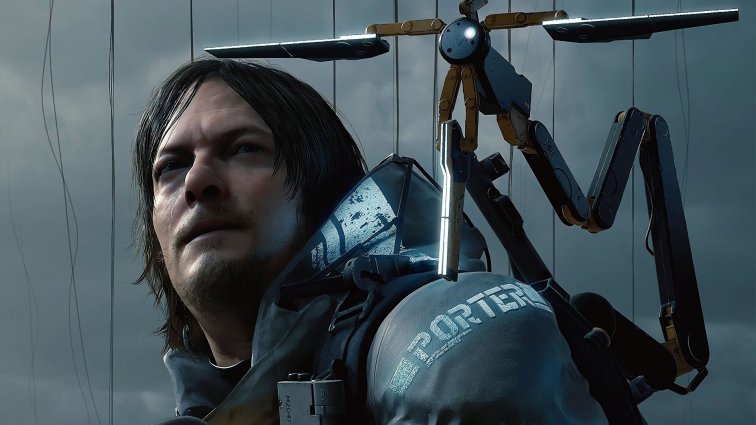
Norman Reedus does a great job of helping the player feel the weight on Sam’s shoulders.
We feel the weight on Sam’s shoulders as he begins to reconnect America. As the journey begins, Sam is reluctant and slow. Keeping his balance is harder and he moves unwillingly forward. As Sam progresses and gains a grasp on his mission, he moves with a sense of purpose. Working in tandem with the leveling system the game has, Sam is stronger and smoother in his movements as a result of him becoming more attached to his journey.
Sam finds himself suffering from aphenphosmphobia, a fear of being touched. Sam fears the connections of others, isolating himself both physically and mentally. The player begins the journey disconnected from others, not being able to form connections as a result of not yet having the necessary social tools. As Sam reconnects with those in his world, the player also begins to connect with those in their world.
Death Stranding’s interaction system functions much like social media. When you encounter another player’s built structure, you are given the option to leave a ‘like’. Showing your appreciation for others helps your connection to that player grow. Kojima made a conscious decision to make the interactions only positive in nature by choosing not to have a ‘dislike’ option. I knew that my Timefall Shelter I built near a mountain to avoid BT’s for myself was appreciated and utilized by others as its likes shot up over the course of a few days. I had, by building that shelter, forged my own connection with thousands of other players. No matter how simple the interaction was, it was an interaction nonetheless–one that wouldn’t have occurred in any other game.
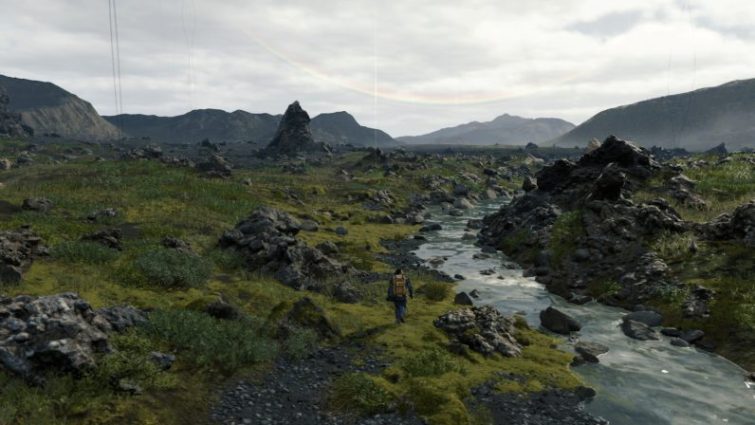
Death Stranding stuns the eyes with some of the best graphics ever on consoles.
Death Stranding begins slowly for a reason. Kojima tests your patience and commitment. Much like he did in Metal Gear Solid V: The Phantom Pain in 2015, he starts the player with nothing. Only with an objective, the player slowly grows their arsenal and player strength. As you grow, you begin to make these connections that make your journey easier. The weight of your task begins to slowly lift off your shoulders and the connections formed lighten the load on both Sam and the player. Without the feeling of hopelessness at the start, the end wouldn’t feel nearly as earned. You and those you connected with guided you across the finish, providing the player with an unrivaled sense of accomplishment that I have only felt a few times in gaming.
The concepts at work in Kojima’s vision are remarkable. Death Stranding presents the player with connections, whether they are made between Sam and the world he exists in or between yourself and those within your own world. Everyone is on the same journey together as they march through rebuilding the UCA. You’re never alone, and that gives this ‘single-player’ game a feeling unlike any other. Playing for others elevates what Death Stranding already to an even higher level.
Death Stranding certainly won’t resonate with everyone. Long portions of the game consist of the player simply walking around the world to advance the narrative at the center of the adventure. A gameplay loop that clicked for me almost immediately may not work for others.
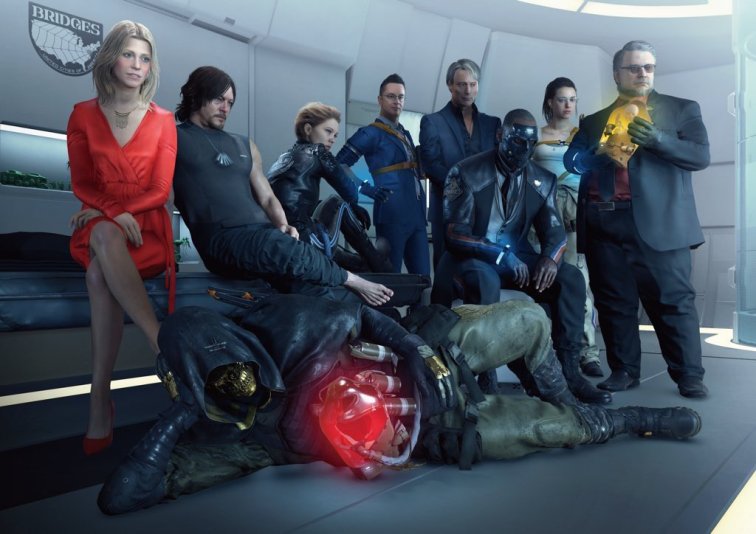
The cast of Death Stranding does an incredible job of performing Kojima’s story.
A sense of peace washed over me as I traversed a snowy mountain and was able to get some rest in a private room built by another player. Something as simple as crossing over rocks left me feeling like I had accomplished something. Kojima-style long-winded cutscenes that are filled with twists and turns kept me intrigued thanks to stunning graphics and engaging writing. The entire journey is accompanied by tremendous music, coming from both the original score and a compilation of some of Low Roar’s best tracks. If all of the above interests you, then Death Stranding may be right up your alley.
Connecting to the world of Death Stranding can be tough, but it provides some of the deepest and richest connections you can form in video games. Kojima set out with a vision for what Death Stranding could be and in only 3 years’ time, we got to enjoy his creation. Kojima’s masterpiece is a one-of-a-kind gaming experience that I am grateful to have partaken in.